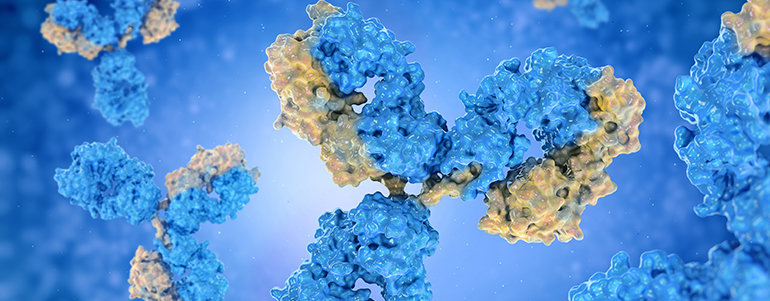Bioanalysis and Immunogenicity Series - Volume 1

07 Aug 2018
FDA Expectations Regarding Immunogenicity Testing
Starting with insulin development in the 1920s, therapeutic proteins have evolved quickly in modern medicine. Most of these biologics elicit a specific immune response, Anti-Drug Antibodies (ADA), that are clinically benign. However, some individuals can be adversely affected. For this reason, therapeutic protein products must undergo immunogenicity testing using assays that are highly selective and have the ability to detect high- and low-affinity antibodies.
The FDA requires a multi-tier immunogenicity domain specific binding assay approach in both preclinical and clinical testing in order to ensure these immunoassays capture the appropriate information based on the phase of testing. These ADA assays feature multiple analytes, assay controls, and affinity in the context of a heterogeneous immunoresponsive clinical population. Draft guidance issued by the FDA in 2016 outlines how to establish immunogenicity testing. It builds on previous guidance from 2009, 2014 and 2015 and includes expanded expectations for confirmatory and titer assays.
The 2016 draft immunogenicity guidance and subsequent FDA feedback in 2017 and 2018 illustrate several themes in expectations for these assays:
- Surrogate positive control no longer means just an assay performance check; instead it requires testing the closest assay element to a sample to be set low enough to the assay threshold represented by the assay cut point so as to follow sample trends as they score against the assay cut point.
- Increased testing expectations for confirmatory assays around sensitivity, selectivity, and precision.
- Reproducibility between screening results at the mean raw data level when comparing an initial screening result and a second screening result that is used to determine % inhibition in the confirmatory assay.
- Every testing tier should be considered a stand-alone assay that is developed and understood in its various test parameters.
- It's important to evaluate your program and update your assay as necessary as the drug candidate moves towards pivotal studies.
- Build in extra data just in case Low Positive Control (LPC) setting is off. An example of this would include testing a series of Positive Control (PC) levels instead of limiting to a single representative high and low PC. Another example of where you may want to build in extra information would be during your Drug Tolerance exercise. During this exercise you would want to include testing PC levels between your high and low PC and below the LPC up to and including the assay sensitivity level.
- LPC should be relevant to samples and set at a distance from the CP to where it will fail 1 percent of the time (without going too far from the CP).
- The expectation for LPC setting is just as rigorous for confirmatory assays.
In light of these themes, there are several things to consider for immunogenicity testing. First, clinical relevance is part of an integrated analysis that takes into account many factors that can possibly contribute to an increased incidence. Having well-developed assays that are phase appropriate and can stand on their own is critical. Second, surrogate controls are the closest representation of a sample; choose them correctly and develop them in conjunction to sample expectations. Third, remember that draft no longer means draft. Start incorporating draft recommendations into your SOPs and be prepared for audits at any time. Keep in mind that a little extra work may go a long way. Finally, trend your assays. Make sure they are performing consistently.
For more insights into FDA expectations for immunogenicity testing, download our complimentary webinar recording.
